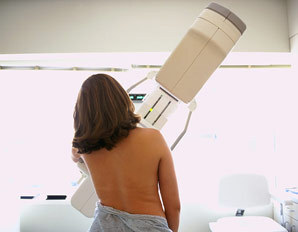Longest-ever mammography study finds more lives saved than expected
by
Brendon Nafziger, DOTmed News Associate Editor | June 28, 2011

The longest-running screening mammography study in history, which followed women in Sweden for almost three decades, suggests it could prevent more deaths than previously thought and that these benefits increase with time.
The results, published online Tuesday in the journal Radiology, add a new twist to a long-running debate on the effectiveness of screening.
Essentially, the study is follow-up to a famous Swedish trial that was the first to find breast cancer screening could, by itself, prevent cancer deaths.
That trial involved about 133,000 women, who were randomly divided into one of two groups: one that received invitations to breast screening, and one that didn't. For the trial, the screening phase lasted seven years, with women aged 40-49 getting screened, on average, once every two years, and women 50-74 getting scanned about once every three years.
The study found that women in the group invited to screening -- both attendees and non-attendees -- had 30 percent fewer breast cancer deaths.
In the current study, the researchers analyzed follow-up data for the women some 29 years after the trial started.
Using both local committees and an external, independent committee to check health and cause of death for the women, and crunching the numbers, the researchers found that screening 1,000 women over a decade could prevent about three breast cancer deaths, nearly double what was originally thought, according to lead author Stephen W. Duffy, professor of cancer screening at Queen Mary, University of London.
"At 29 years of follow-up, the number of women needed to undergo screening for seven years to prevent one breast cancer death was 414 according to local data, and 519 according to consensus data," the authors wrote. Most of the deaths would have occurred 10 years after the screening started, they said.
"This indicates that the long-term benefits of screening in terms of deaths prevented are more than double those often quoted for short-term follow-up," Duffy said in a statement.
The USPSTF angle
The study comes almost a year and a half after a U.S. Preventive Services Task Force panel recommended against screening women aged 40-49, and suggested women 50 and over receive scans once every two years, instead of annually. The panel's recommendations drew fierce opposition from radiology groups.
Talking with Reuters, Duffy said the new findings don't touch on frequency for screening, but he suggested as a screening regimen, women 40-54 getting scanned once every year and a half and women 55 and older once every two years.
Dr. Virginia Moyer, current head of the USPSTF, told USA Today that the findings matched those from other studies, and wouldn't significantly influence the screening debate.
"When the task force reviewed all evidence for women 40 to 49, it found that about 2,000 to 2,500 women had to be invited to mammography screening to prevent one breast cancer death, which would be 40 to 50 per 100,000 women," she told the paper.
|
|
|
You Must Be Logged In To Post A Comment
|
